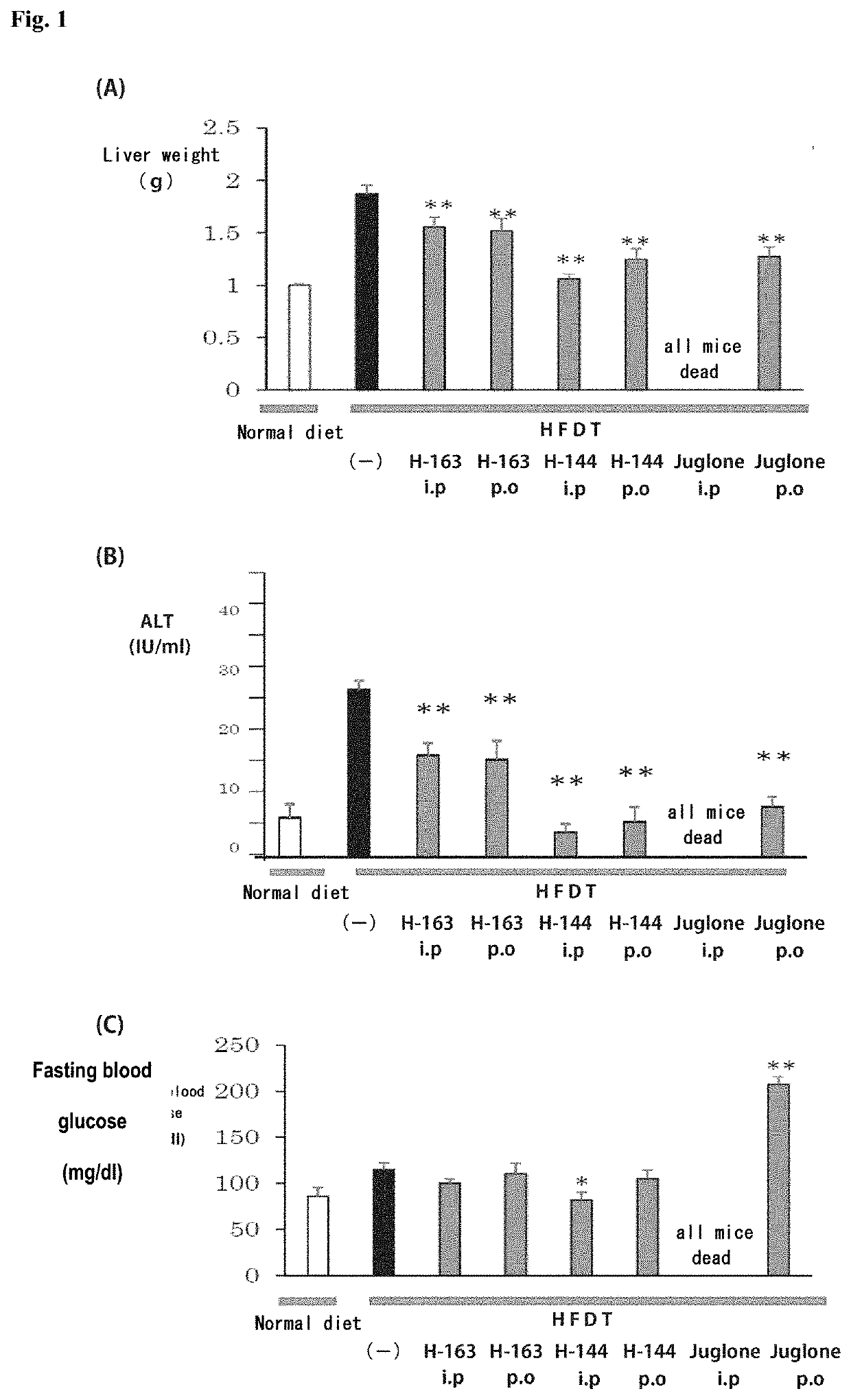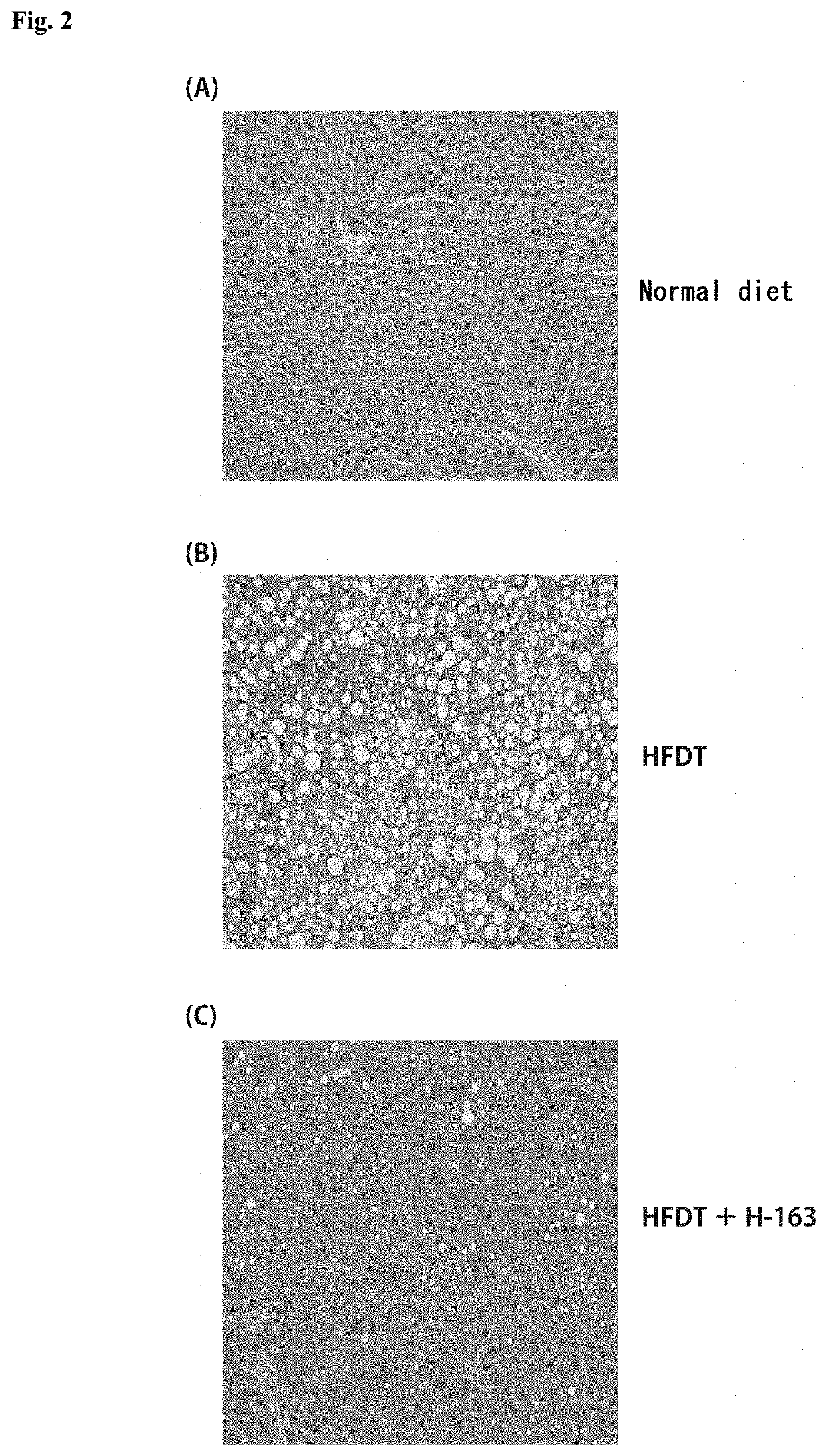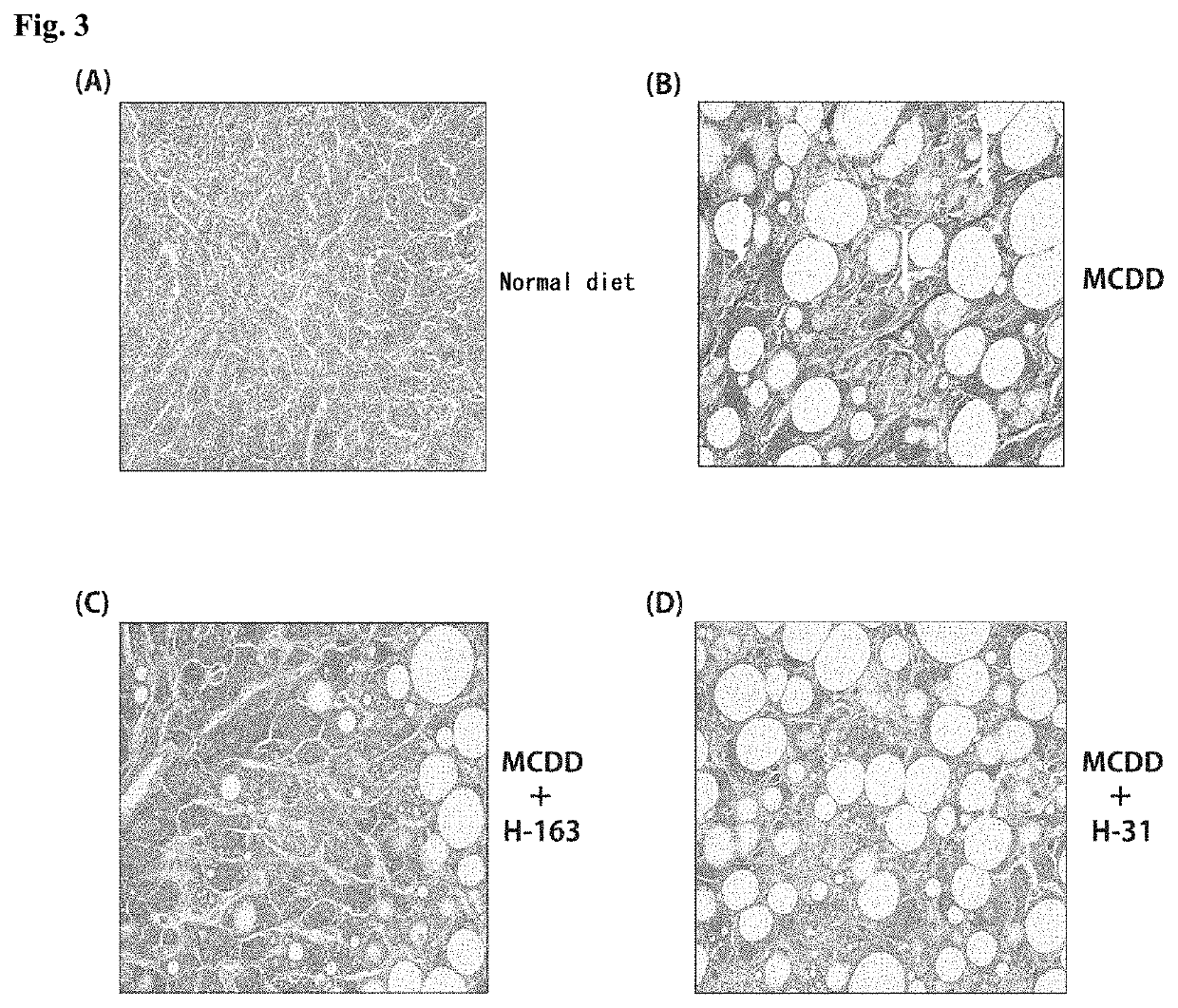Therapeutic Agent for Fatty Liver Diseases and Therapeutic Agent for Adiposity
- Summary
- Abstract
- Description
- Claims
- Application Information
AI Technical Summary
Benefits of technology
Problems solved by technology
Method used
Image
Examples
example 1
(Synthesis of Amide Compounds)
(Example 1-1) Synthesis of Intermediates
[0198]Intermediates (H-34, H-47, and H-48) used for the synthesis of compounds used as active ingredients in the present invention were produced.
Thionyl chloride (4.9 g, 3.0 mL, 41 mmol) was added to a solution of D-naphthylalanine (5.0 g, 23.2 mmol) in methanol (100 mL) at room temperature, and the resulting mixture was stirred at the same temperature for 16 hours. The mixture was concentrated under reduced pressure. Toluene was added to the residue, and thionyl chloride was removed from the residue by repeating the concentration step under reduced pressure several times to give H-34 represented by the following structural formula as a white powder (6.2 g, 23.2 mmol, 100%).
[0199]To a solution of H-34 hydrochloride (400 mg, 1.4 mmol) in dichloromethane (3 mL), saturated aqueous sodium bicarbonate solution (3 mL) at 0° C. and then a solution of triphosgene (178 mg, 0.6 mmol) in dichloromethane (1 mL) at the same te...
example 2
(Synthesis of Ester Compounds)
(Example 2-1) Synthesis of Intermediates
[0219]An intermediate (H-26) used for the synthesis of compounds used as active ingredients in the present invention was produced.
[0220]To a suspension of D-naphthylalanine (10.3 g, 47.9 mmol) in water (40 mL), 1M sulfuric acid (60 mL) and acetone (160 mL) were added at room temperature, and the resulting mixture was cooled down to −5° C., and a solution of sodium nitrite (9.9 g, 144 mmol) in water (40 mL) was slowly added to the mixture. The resulting mixture was stirred at −5° C. for 30 minutes, and then at room temperature for further 16 hours. After acetone was removed under reduced pressure, the mixture was extracted with ethyl acetate. The organic layer was washed with saturated brine, dried over anhydrous magnesium sulfate, and then filtered and concentrated under reduced pressure to give a compound (H-18) represented by the following structural formula. This compound was used without further purification a...
example 3
(NASH Treatment Study)
Example 3-1
[0233]Animal experiments were performed using non-alcoholic steatohepatitis (NASH) model mice to test the compounds synthesized in Examples for the therapeutic effect on NASH.
[0234]NASH model mice (hereinafter referred to as “NASH mice”) were produced by feeding a high-fat diet containing trans fatty acids (HFDT) to individual male laboratory mice (C57BL / 6J) for 8 weeks. The mice were divided into groups, and animal experiments were performed on a group of mice to which the compound (H-144) synthesized in Example 1-2 or the compound (H-163) synthesized in Example 1-3 was administered intraperitoneally at a dose of 2.5 mg / kg / day three times a week, a group of mice to which H-144 or H-163 was administered orally at a dose of 5.0 mg / kg / day three times a week, a group of mice to which Juglone, a known Pin1 inhibitor, was administered intraperitoneally at a dose of 2.5 mg / kg / day three times a week, a group of mice to which Juglone was administered orally ...
PUM
| Property | Measurement | Unit |
|---|---|---|
| Therapeutic | aaaaa | aaaaa |
Abstract
Description
Claims
Application Information
 Login to View More
Login to View More - R&D
- Intellectual Property
- Life Sciences
- Materials
- Tech Scout
- Unparalleled Data Quality
- Higher Quality Content
- 60% Fewer Hallucinations
Browse by: Latest US Patents, China's latest patents, Technical Efficacy Thesaurus, Application Domain, Technology Topic, Popular Technical Reports.
© 2025 PatSnap. All rights reserved.Legal|Privacy policy|Modern Slavery Act Transparency Statement|Sitemap|About US| Contact US: help@patsnap.com



